|
11/24/2020 0 Comments Land backAllow Indigenous people to lead the way; follow them Understand that being an ally / activism is not about doing what you like to do Do not mistake social activity as doing something for Indigenous people Understand that Indigenous needs are more than about your need entertainment Move beyond your need for an education; you becoming educated is not a legitimate ally / activist role Do something as we define our needs to be; not yours Don’t hold up our books like trophies; do something Understand the most important knowledge is practiced; do something Like Jean says, “shut up and listen”; yes, she said this Learn the difference between anti-colonial knowledge and Indigenous knowledge; value both Learn the difference between Elders’ knowledge and Indigenous intellectual knowledge; value both Serve the most oppressed; not who you want to serve or get off serving Do not project your shame and mistakes on Indigenous people; they are your issues Understand lateral violence and stop causing it; think deeply here Stop interfering with Indigenous people's relationships; such as the one between them and their Elders Indigenous Elders are not for you; get over it Stand behind Indigenous people; not in front Understand that saving the land and water is more than about an aesthetic for humans to enjoy Stop gossiping about Indigenous people; it is pitiful Value Indigenous people who have done the hard work to get an education and who stand up Stop Romanticizing Indigenous knowledge; resolve your issues with this Stop thinking smudging absolves you or stands in place of you doing something Dig into your pocket and give generously weekly, monthly, yearly Seek out and purchase from Indigenous artists and crafters Fundraise for someone who is working hard already; you can do this Serve Indigenous food banks in real ways – weekly, monthly, yearly Stop pretending to be naïve, we can see right through it and it is patronizing Stop talking about hope; it is not a plan; and it is patronizing End your false generosity, we can see right through it to and again it is patronizing Understand the depth of knowledge an intersectionally oppressed person carries; and respect it Stop assuming lawyers and historians understand an Indigenous framework; most do not Stop thinking Indigenous knowledge is only about how you feel; it is more than this Understand the greatest gift we have is our minds; this is fundamental to Indigenous knowledge End racism, sexism, and ableism Learn about genocide and the doctrine of discovery Give your Land Back through your last will and testament  © Lynn Gehl, Ph.D. is an Algonquin Anishinaabe-kwe from the Ottawa River Valley. She is a published author of Claiming Anishinaabe: Decolonizing the Human Spirit and The Truth that Wampum Tells: My Debwewin on the Algonquin Land Claims Process. You can reach her and see more of her work at www.lynngehl.com.
0 Comments
10/1/2020 0 Comments The Integrity the Moon Teaches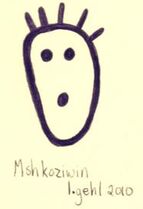 In the Indigenous knowledge tradition, which sits closer to the naturalistic paradigm versus the humanistic paradigm, we are reminded to turn to the natural world to guide our behaviours and practices. Although the moon comes and goes, or alternatively said waxes and wanes, she always returns. She is consistent in her path; She always wears the same face of bright reflected light; and She always provides us with love in our darkest hours. She is never two faced. This is what She teaches humans.  © Lynn Gehl, Ph.D. is an Algonquin Anishinaabe-kwe from the Ottawa River Valley. She is a published author of Claiming Anishinaabe: Decolonizing the Human Spirit and The Truth that Wampum Tells: My Debwewin on the Algonquin Land Claims Process. You can reach her and see more of her work at www.lynngehl.com.
© Lynn Gehl, Ph.D. is an Algonquin Anishinaabe-kwe from the Ottawa River Valley. She is a published author of Claiming Anishinaabe: Decolonizing the Human Spirit and The Truth that Wampum Tells: My Debwewin on the Algonquin Land Claims Process. You can reach her and see more of her work at www.lynngehl.com.
7/5/2020 2 Comments De-Colonize Intellectualism“Who is doing social justice work?”, she asked? “I am”, I responded. According to the Great Law of the Anishinaabeg, philosophers and intellectuals were an important part of the larger community. Their work was valued to be equally as important as the clan members who were hunters, clan members who chopped and gathered wood, clan members who took care of the children, clan members who sewed clothing, and clan members who cooked. The short story is all clan members were equally important and all clan members worked together to live the good life. Hunters provided for all, where in turn wood choppers provided for all, where in turn cooks provided for all, and where in turn the intellectuals provided for all. It is said that the sacred circle provided equally for everyone. Today we live in a top down power structure where oppressive power is inherent in all of our structures such as our medical and housing structures. This power structure is also laden in our education institutions where as such many people who work within them have limitations in what they can say and do. They have to be careful because they must not upset their employer and risk the economics and benefits that they are stitched into. Of course these employees are doing important work; no one would deny this. Regardless, we must not confuse an employee as the ideal intellectual and human rights advocate because, again, they are edited, monitored, and controlled in what they say and do by their institution and employer. While this is the case today, there remain many intellectuals and human rights advocates who consciously opt not to work within the crushing limitations of oppressive structures such as universities or government institutions. These intellectuals and human rights advocates opt to work outside of these institutions because they do not want to be complicit in top down power, do not want to be censored, do not want these institutions to monopolize their time, effort, and voice, or because they need the freedom to do the hard work that has to be done. They must and want to remain at the community level. Like the muskrat, they do have a strategy. Unfortunately today community intellectuals and human rights advocates who work outside of institutions are not valued at the community level by community people, the very people who need and want change. Despite all the discussions of the need to de-colonize, for some reason too many people continue to think community based intellectuals do not need to be provided for. Some people who wish to see and experience change contradictorily think these community intellectuals and human rights advocates should go get a job when in fact they have a job. Let’s face it, if they did get a job in an institution they would be unable to do the intellectual and human rights work they are doing. We need to move back to a place that values these community intellectuals and human rights advocates because they deserve to be provided for. If community people and organizations are unable to see this rationale, it should be even clearer that community intellectuals and human rights advocates need to be provided for. They need fire too; they need water too, they need clothing too, they need eggs too, they need bread too … . “Who is doing social justice work?”, she asked? “I am”, I responded. © Lynn Gehl, Ph.D. is an Algonquin Anishinaabe-kwe from the Ottawa River Valley. She is a published author of Claiming Anishinaabe: Decolonizing the Human Spirit and The Truth that Wampum Tells: My Debwewin on the Algonquin Land Claims Process. You can reach her and see more of her work at www.lynngehl.com. 6/28/2020 4 Comments A Canada Day Manifesto on GenocideCanada, the nation state, and Canada’s national policy continues to exist on the genocide of Indigenous Nations. Two public inquiries, The Truth and Reconciliation Commission (2015) and the National Inquiry into Missing and Murdered Indigenous Women and Girls (2019) have concluded that Canada’s foundation is based on the physical, biological, and cultural genocide of Indigenous Nations and people. What is more, it was argued that this Canadian made genocide continues today through cultural means that include laws, policies, practices, and standard operating procedures, as well as through acts of neglect and omission. This is the case regardless of Canada’s so-called good intentions. A narrow focus on intent is not the definitive element in the case of the genocide of Indigenous Nations and people, and of Canada’s crimes against humanity in this regard. As long as this policy of genocide continues Canada, the prime minister, the privy council, the cabinet, and the members of parliament are human rights violators. There is no need to debate this. Cultural genocide against Indigenous Nations and people is carried out through Canada’s laws, policies, and practices—both written and unwritten—of neglect and elimination such as the extinguishment of Indigenous rights through the land claims and self-government process and policies that Canada, through forked-tongue rhetoric, erroneously calls the “Modern Treaty Process”. Since its inception in the 1970s, and largely due to Indigenous opposition to the genocidal terms of the land claims process, over time Canada has manipulated its rhetoric in its policy from the use of such euphemisms as “extinguishing all our rights” to “extinguishing only our land and land related rights” to “relinquishing our rights” to “defining our rights completely”. Regardless of the shift in rhetoric and the misleading name the outcome remains the same–Indigenous Nations continue to be denied the land and resources needed to rebuild our governance systems and institutions such as schools, housing, courts, and health care that are rooted in our knowledge systems and thus culturally meaningful, relevant, and subsequently efficacious in a way that the good life is attainable. Canada’s failure to address the genocide encoded in their land claims and self-government policies has been, and continues to be, manipulatively disguised and this is intentional. It is now clearly understood that Canada’s policy and law makers first and only priority is to obfuscate the genocide rather than address the genocide–meaning crafting a better tool—law, policy, practice, or gap in law, policy, or practice—that disguises the genocide. As a result the oppressor’s culture continues to be imposed on Indigenous Nations. This cultural imposition is genocide. Raphael Lemkin was clear about this. Continue reading this manifesto by clicking here on this link: https://www.lynngehl.com/genocide-a-personal-manifesto.html  © Lynn Gehl, Ph.D. is an Algonquin Anishinaabe-kwe from the Ottawa River Valley. She is a published author of Claiming Anishinaabe: Decolonizing the Human Spirit and The Truth that Wampum Tells: My Debwewin on the Algonquin Land Claims Process. You can reach her and see more of her work at www.lynngehl.com. When Justin Trudeau relied on a platform/promise of truth and reconciliation and nation-to-nation to come in to power, I found myself in a sad and miserable state. What made this feeling worse for me was how so many people were falling for it. I knew it was a political lie. I knew he had no plan to meet Indigenous people on a nation-to-nation basis. I knew he was not going to share the land and resources on an equal basis. Although I knew this what made me sad and miserable was that he was manipulating the hopes of Indigenous people. This I felt was a violation of the worse kind. I know too many Indigenous people who have killed themselves because they had no hope. And I know what it is to live without hope. I do this every day of my life. As a child all too often I felt and observed my hope being manipulated by other people; people who knew better but could not come through for me. Recently I have had another experience of this manipulation of hope. This time it was more of a bizarre form of appropriation. I must caution you though that reading the paragraphs below may cause within you extreme cognitive dissonance, extreme enough for you to project hatred toward me, or maybe it may deepen that hate you already feel. I will take that risk though because ultimately I know I am going to die alone; die alone without all the pretenders who claim to care about Indigenous people. Indigenous people have been speaking up, petitioning, and protesting for our land and land related economic rights since the early 1600s. Our more recent protests include challenges to the 1969 White Paper, and in 1982 when the Constitution was re-patriated. And of course there have been numerous court challenges such as the 1973 Calder decision, 1990 Sparrow decision, 1997 Delgamuukw decision, 2004 Haida decision, 2014 Tsilhqot’in decision … . Indigenous people have done our work over and over and over again. It is clear as day we want our Land Back. Again we have done our work. The latest Indigenous uprising is on the matter of the Wet’suwet’in Nation’s demand that their rights be upheld and honoured. Many Indigenous and settler people across Canada protested in solidarity with them. During these protests I had an odd experience, again a feeling, and an insight when I heard an older white woman share her joy that she, in her old age, was finally able to experience Indigenous people rise up against the colonial state. This older woman expressed her glee where people around relished along with her. I experienced this collective glee perplexing and disenfranchising because it seemed to me that she was making the protests all about her and her need for a happy story and ending. It seemed like the only thing that was important was how she felt experiencing the protest and the hope it gave her. To me this was a bizarre experience of appropriation of hope somewhat analogous to when a wealthy person appropriates the ‘culture of poverty’ as a part of their persona. Indigenous protests are not about settler Canadians and their need to feel good about themselves. It is foremost about Indigenous people and our need to address in concrete and practical ways the hopelessness that many of us feel and experience. As many know, many Indigenous people feel hopelessness every day of our lives and for good reason. We wake up with this feeling of hopelessness, every step we take is with this feeling of hopelessness, and we go to bed with this feeling of hopelessness. For me, and many Indigenous people, it was a sad situation when Juno award nominee Inuk singer Kelly Fraser ended her life on Christmas Eve. She was only 26 years old and for many she held hope. I have always felt that there is the need to allow Indigenous peoples the space required to express this very hopelessness. I do this bravely as I soldier on. We need to keep in mind that suicide is only one manifestation or response to living with hopelessness. We need to allow people the right to talk about hopelessness when they want to versus quell and silence it. My commentary here is not so much about living with hopelessness, rather it is about how it is that our protests are not about a settler’s need to feel hopeful especially considering that most settlers do not really understand what the issues are and what it is that we want: Our Land Returned to Us. We want more than Church charity; We want to live as well as Canadians on our land and from our land with structures that are meaningful to us such as health care, education, and law. It was my experience that this older woman appropriated the recent Wet’suwet’in protest as hers for her need to feel good. To me it was bizarre because I know that it will not be until settler Canadians stand up en masse to their government regarding Indigenous rights that anything will change. Once this happens, Indigenous people will genuinely experience the joy and glee associated; then settler people can stand behind that. Until this happens there really is nothing for settlers to feel joy about. Please Creator make them stop these bizarre forms of appropriation. The hopelessness and hope to be felt is not at all, all about them. When it is, the hopelessness sinks deeper for Indigenous people. It sure does for me. While after reading this, while some people may be prone to act and think into a place of cognitive dissonance and hate the messenger, as settler Jean Koning has stated several times, “Settler people need to shut up and listen” and I will add stop stealing hope that is not really there. 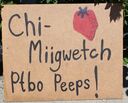 © Lynn Gehl, Ph.D. is an Algonquin Anishinaabe-kwe from the Ottawa River Valley. She is a published author of Claiming Anishinaabe: Decolonizing the Human Spirit and The Truth that Wampum Tells: My Debwewin on the Algonquin Land Claims Process. You can reach her and see more of her work at www.lynngehl.com.  Art by Marlyn Bennett Art by Marlyn Bennett While you may have questions guiding your thinking, and this is a good thing, it is never appropriate to assume you can direct your questions to a person. Said another way, while it is good that you are thinking and have some boundaries around what it is that you are seeking to learn, you should not assume that you have a right to have your questions answered. There are many reasons for this. First, knowledge does not unfold in linear ways. Continue to listen, read, and think. As the knowledge unfolds you will learn what is important when the time is right. As the knowledge unfolds you may learn that your guiding questions were not important after all. Second, a good teacher will always respect your own journey. They will respect your process of learning because they know that if the journey to the knowledge is your own process of observing, participating, thinking, dreaming, and making the necessary cognitive connections you will come to embody the knowledge and remember it better than if the knowledge is simply handed to you on a plate. We need to value that knowledge is more than about a squirrel collecting nuts or about rote memory; this is especially so if the knowledge is deeply layered or requires conceptual reasoning skills. Third, when the knowledge is of a personal nature it is not appropriate to ask questions. This is especially so if you do not have a proven good relationship, a proven trusting relationship, or a proven relationship of reciprocity with the person. Fourth, if you are in a quest for knowledge it is really important to demonstrate that you will be responsible first. Responsibility means many things such as you will act in a good and respectful way versus use the knowledge for personal gain; or when the knowledge is of a personal nature you will not use it to gossip about and thus harm. Fifth, it must be understood that the most important knowledge will not be shared and we may never know it because the knowledge is too personal. Sometimes you have to trust your authority versus question it.  © Lynn Gehl, Ph.D. is an Algonquin Anishinaabe-kwe from the Ottawa River Valley. She is a published author of Claiming Anishinaabe: Decolonizing the Human Spirit and The Truth that Wampum Tells: My Debwewin on the Algonquin Land Claims Process. You can reach her and see more of her work at www.lynngehl.com. 2/6/2020 2 Comments Heartache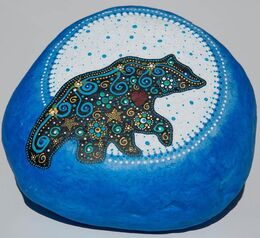 Art by Marlyn Bennett Art by Marlyn Bennett The Second of 13 Moon Teachings The Anishinaabeg have sophisticated teachings about the intelligence of the heart that can take many years, if not a lifetime, to come to understand and fully know. In my work on Indigenous knowledge, identity politics, the land claims process, and cultural genocide I have had to reflect on the intelligence of the heart over and over again. I cannot teach the depth of this in this short blog. In the immediate, though I can offer two short teachings that I think many people will find useful. As you read on though, be forewarned that you may be triggered. Pain is Not a Competition Some time ago a friend told me a story about an experience she had with a ‘victims of a sexual violence’ support group that she herself had facilitated. This experience was an important teachable moment for the members of the group. Support groups are important because through them victims are provided a safe context where they share their thoughts and feelings about the violence that they experienced with people who have had similar experiences. Through sharing with people who are like them a context of wellness potentially presents itself. In this particular support group, my friend told me that the women began to compare their pain in a competing way through offering statements such as “he raped me more than once”, “he raped me with a knife to my throat”, and so on …. Upon observing this my friend was compelled to gently interfere because the process of sharing for social mirroring and potential healing was becoming more of a competition. She reminded the women that they were gathered together to support and listen to one another. She carefully reminded and coached the women to understand that support groups are not about members competing with one another; rather support groups are about social mirroring and all that is inherent such as listening to and gaining understanding from people who have had similar experiences. She implored the women to hear and understand what she was saying because as a wellness professional she knew that it is through the medicine of social mirroring that people gain, in the very least, a tiny little bit of medicine, where after, this little bit could become the seed for more healing to follow. My point is, it is a good practice not to silence people who have had a similar experience as you. Rather, it is best to listen to others where in turn others who understand your pain will then listen to you when you share. Pain is not a competition. Wellness can be found in listening. On Vicarious Trauma Heartache is never the same for any two people; even when the traumatic event that causes the heartache is the same, we all experience things differently because many things mediate our personal responses. For example, our various subjectivities mediate what we observe, how we feel, and how we cope. Another way to say this is there are multiple responses to the same stimuli; there is no universal response to any one trauma. All humans have a subjectivity that includes such entities as a person’s age, gender, and race. While the concept of subjective responses to violence are easily grasped, some people struggle with understanding how at times the same traumatic event can become vicariously magnified in one person. Understanding vicarious trauma requires a little more conceptual thought but it can be done. In a home where an episode of physical violence has occurred, while each child will experience the trauma based on their subjectivity, some of the children also experience vicarious trauma. They do this through reading the pain on their sibling’s faces and bodies, where through this reading, they themselves experience additional trauma. For example, an older child who feels responsible for the safety of younger siblings may observe and read the pain in their faces where through this process additional trauma becomes inscribed in their own heart and mind thus deepening the heartache. Depending on the number of children involved, vicarious trauma can be two fold, three fold, four fold, five fold, six fold, seven fold… . No two people share the same trauma; subjectivity mediates. We must also consider the possibility of vicarious trauma. Chi-Miigwetch for reading this and thinking about it.  © Lynn Gehl, Ph.D. is an Algonquin Anishinaabe-kwe from the Ottawa River Valley. In 2017 she won an Ontario Court of Appeal case on sex discrimination in The Indian Act, and is an outspoken critic of Canada's land claims process. Recently she published Claiming Anishinaabe: Decolonizing the Human Spirit. You can reach her through, and see more of her work, at www.lynngehl.com. 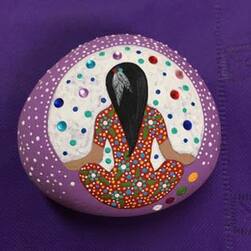 Art by Marlyn Bennett Art by Marlyn Bennett The First of 13 Moon Teachings I have come to learn that many people do not really understand what I mean when I talk about “practice knowledge”. There are many delineations of what I mean … First, some people think I am talking about the difference between theory and practice, and that when I talk about practice knowledge that I am stressing that people can have all the theory in the world but if it is not practiced it is meaningless. While I like this truth and agree I mean something different ... . Second, in the Anishinaabeg knowledge tradition it is commonly thought that the most important knowledge is the knowledge we do through our practices. What I mean by this is our parents teach us how best to do things through their practices, meaning through being good role-models. For example, through practice they teach us how to be good human beings. From this process of practice we practice it too even though we do not consciously understand the theory of ontological morality. We just do morality in practice as it was practiced for us to learn from. This means we do not necessarily have a conscious and cognitive ability to talk about the theory of morality and why it is important; rather we embody and practice it. Third, ceremony is a collection of practices. While some people are able to conduct a Sacred Pipe Ceremony because they learned it through practice from their Elders, others who were not trained in ceremonies yet who have been trained in Indigenous knowledge philosophy have the skill to talk about it in a way a ceremonialist or Elder may not be able to. Both are important. Fourth, some people who embody intergenerational trauma manifest it at the level of practice with little ability to express consciously and cognitively the very knowledge they have within their bodies. This inability does not mean they do not have knowledge about their trauma; they do at the level of embodiment and practice. When knowledge is embodied and practiced in this way, in a way that is harming to self and others, it is suggested that the person go on a journey; a journey to connect one’s heart and mind so they are better able to cope and have a good life. Fifth, some people have great ideas in that they are great thinkers but they lack the skills, or maybe the time, to manifest the ideas into concrete practice. When this happens another person can pick up the idea and work with it to ensure it moves into practice. Sixth, sometimes practice knowledge is just yours and only yours. It is not something you do for other people. For example, it is never advisable to say to an impoverished person, “I will pray for you”. Once I heard someone say this to a woman who was struggling to feed her eight children. I could tell by the look on her face that she was patronized and was thinking, “I don’t need your prayers. Stuff your prayers and help me feed my children in real and practiced ways.” Most of the time knowledge at the level of practice is the most important knowledge. Sometimes thinking or theoretical knowledge is the most important knowledge. And sometimes both together are important knowledge. Chi-Miigwetch for reading this and thinking about it.  © Lynn Gehl, Ph.D. is an Algonquin Anishinaabe-kwe from the Ottawa River Valley. In 2017 she won an Ontario Court of Appeal case on sex discrimination in The Indian Act, and is an outspoken critic of Canada's land claims process. Recently she published Claiming Anishinaabe: Decolonizing the Human Spirit. You can reach her through, and see more of her work, at www.lynngehl.com.  People need to stop thinking reconciliation is possible through government rhetoric alone. Genuine action must follow. As long as Canada fails to participate in a genuine nation-to-nation relationship that honours Indigenous Land and Resource rights, reconciliation will always only be something settler people and their descendants celebrate through false parties at the expense of Indigenous people. Imagine an Indigenous child who has embodied within them generations of racist, sexist, and genocidal colonial policies and laws, where their father was an angry, abusive, drunken, maniac due to racism, abandonment, abuse, and poverty, and where their mother was a neglected child, a residential school survivor, and a victim of sexual abuse. Imagine this child who has grown up in a similar context as their parents of racism, sexism, abuse, poverty, neglect, and hunger. Imagine all this knowledge is embodied within this child yet the young child is unable to express it verbally; all they can do at their young age is express their embodied knowledge and inherent emotions at the level of practice. After all this is what Indigenous knowledge brings to the table – that being that knowledge is not simply in the mind; it begins in the feet and body first. Imagine this child of direct trauma, inter-generational, and multi-generational trauma goes to school and manifests their embodied knowledge and emotions of racism, sexism, and genocide against a more privileged white settler child, where they are then forced to reconcile their knowledge that is yet to be really understood, examined, and affirmed and consequently if fortunate enough addressed and resolved. In this context so-called reconciliation means the Indigenous child has to shut down their knowledge and emotions and who they are, where everyone is then allowed to ignore what the real underlying issues are all for the sake of reconciliation. In this context it is the privileged white settler child who gains reconciliation off the back of the Indigenous child. In this context reconciliation means the Indigenous child is not really a person; in this context the privilege child with all the material wealth once again gains. If you think reconciliation comes from institutions and organizations with paid employees that are funded in part through the latest political rhetoric and dollars you are not doing the critical thinking needed. And you are patronizing critically trained and thinking Indigenous intellectuals who know better. Follow the money and you will learn you are being manipulated; you are celebrating the oppression of others; and you are complicit in the perpetuation of the pain of children who are pooping in buckets, drinking poisoned water, and eating mercury contaminated food. When people celebrate their own oppression, or the oppression of others, this is the worst form of manipulation and genocide. Today colonization has become a celebration rooted in the lie of reconciliation. It is a party that makes some Indigenous people happy and where some settlers too are happy and benefiting more. Today reconciliation parties, like false generosity, are actually fake celebrations that may absolve settler anxiety and guilt. In this way these parties are rituals that are ultimately more for settler people. Today colonization means celebration called reconciliation that will include only some Indigenous people because the Indigenous critical thinkers want nothing to do with celebrating their own oppression. Look around and you will most likely see the party goers are paid employees; look around and you will most likely see party goers who are seeking awards; look around and you will most likely see party goers who are looking for political appointments. That said, if you need to attend a celebration to absolve your guilt, you can be sure there are Indigenous intellectuals who very well know you are complicit and they are hurt by your complicity. When you look at their faces you will see and feel their pain. Consider this transfer of their feelings the kindness and truth they offer. Reconciliation will only be achieved when Indigenous Nations’ jurisdiction to their Land and Resources is respected. We only need to turn to the land that Canada’s parliament buildings squat on. For almost 250 years the Algonquin Anishinaabeg have been asking Canada to respect our rights through the framework of the Two Row Wampum Belt and the British and Western Great Lakes Covenant Chain Confederacy Wampum Belt constitutional framework. Despite our repeated request Canada is only offering the Algonquin in Ontario 1.3% of our territory, a $300 million buy-out, and is currently desecrating Creator’s Sacred Pipe known as Akikpautik and Akikodjiwan. If you experience cognitive dissonance from this message this does not mean it is wrong. One day I hope to invite you to a real party that will not celebrate my oppression. 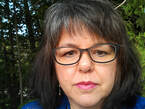 © Lynn Gehl, Ph.D. is an Algonquin Anishinaabe-kwe from the Ottawa River Valley. In 2017 she won an Ontario Court of Appeal case on sex discrimination in The Indian Act, and is an outspoken critic of Canada's land claims process. Recently she published Claiming Anishinaabe: Decolonizing the Human Spirit. You can reach her through, and see more of her work, at www.lynngehl.com. 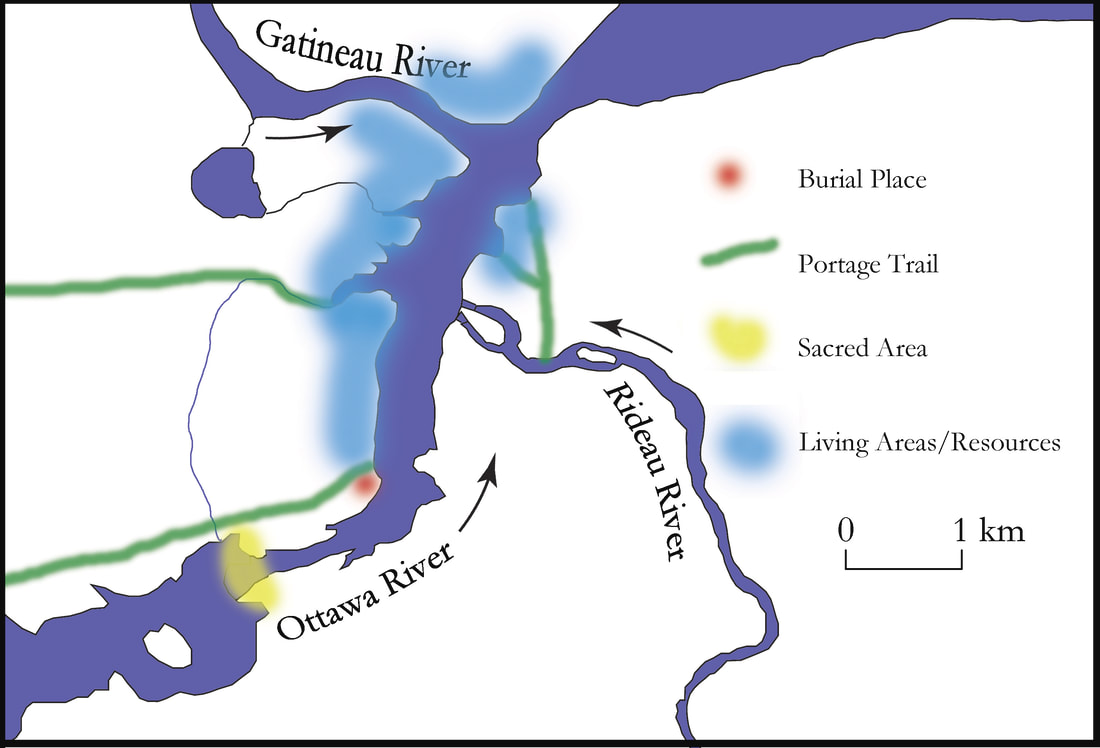 This map offers important knowledge about an ancient sacred land and waterscape. The yellow area is Akikpautik, the location where Creator placed the First Sacred Pipe. The red area is an ancient burial ground and the green illustrates ancient portage trails. Map source: Pilon, J. & Boswell, R. (2015) I have been hearing people offer the rationale that ‘all land is sacred’ as the excuse to desecrate land and waterscapes that are particularly sacred to the Algonquin Anishinaabeg. Intuitively most people are able to quickly realize that burial sites are particularly sacred and that the argument is poor. In his book “God is Red: A Native View of Religion” the well-known and highly respected author, theologian, historian, and Indigenous activist Vine Deloria Jr. (1933-2005) offers important thoughts that can guide us in thinking through the desecration and destruction of so called development. Deloria offers us four categories of sacred places. The first category involves land and waterscapes to which we attribute sanctity because it is a location where, within our known history, something of great importance took place there. One such example is the Gettysburg National Cemetery and the ground where the Twin Towers in New York City were once located. Another example is Wounded Knee, South Dakota. These places are considered sacred sites because of recent human activity. Second, other lands are sacred not due to human events, but rather due to a higher power. These are land and waterscapes where people have a special experience and this experience is attributed to the sacred. Said another way, within a secular context there is an experience that is attributed to the holy. One example is the town of Buffalo Gap at the south eastern edge of the Black Hills of South Dakota which is the location where the buffalo first emerged in the spring and which marks the beginning of the Plains Indians’ ceremonial year. Third, Deloria explains there are indeed locations of overwhelming holiness. At these places a higher power, on its own initiative, is revealed to human beings. Afterward this location and revelation is then preserved in story and shared for future generations to remember, revere, and direct them forward in a good way. Interestingly Deloria offers, “Indians who have never visited certain sacred sites nevertheless know of these places from the community knowledge, and they intuit this knowing to an essential part of their being” (271). One such place is Akikpautik, the location where Creator placed the First Sacred Pipe, also known as the Great Sacred Pipe. The sacredness of this particular land and waterscape has been preserved and taught to Algonquin Anishinaabeg and settler allies by the late Grandfather William Commanda (Gehl 2018). Lastly, Deloria offers there is a fourth category of sacred lands in that higher spiritual powers will always communicate with human beings of future. His point is we must always be open and ready to experience new revelations at new locations that will then become particularly sacred places. In this way Deloria values that Indigenous knowledge is alive, it growths, it is fluid, it is a verb, and it continues on into the future. References and Additional Sources Cicero, M. (2018). Condos on an Algonquin sacred site? Panels examines ongoing colonialism. Leveller. Retrieved from https://leveller.ca/2018/11/condos-on-an-algonquin-sacred-site/ Deloria, V. Jr. (1992). God is Red: A Native View of Religion. Golden, CO: Fulcrum Publishing. Dumont, A. (2014). Free the Falls. Retrieved from http://albertdumont.com/free-the-falls/ Gehl, L. (2018). Akikodjiwan: The Destruction of Canada’s Heart of Reconciliation. Watershed Sentinel. Retrieved from https://watershedsentinel.ca/articles/akikodjiwan/ Gehl, L., & Lambert, L. (2018). Reconciliation Really?: A Timeline of the Desecration of Akikodjiwan and Akikpautik, An Anishinaabeg. Leveller. Retrieved from https://leveller.ca/2018/03/reconciliation-really/ Lambert, L. (2016). Chaudière Falls is an Indigenous Cathedral. Anishinabek News. Retrieved from http://anishinabeknews.ca/2016/10/01/chaudiere-falls-is-an-indigenous-cathedral/ Neigh, S. (2017). Canada 150 and the violation of an Algonquin Anishinaabe sacred site. Rabble. Retrieved from http://rabble.ca/podcasts/shows/talking-radical-radio/2017/01/canada-150-and-violation-algonquin-anishinaabe-sacred-s Pilon, J., & Boswell, R. (2015). Below the Falls; An Ancient Cultural Landscape in the Centre of (Canada’s National Capital Region) Gatineau. Canadian Journal of Archaeology, 39, 257-293.  © Lynn Gehl, Ph.D. is an Algonquin Anishinaabe-kwe from the Ottawa River Valley. In 2017 she won an Ontario Court of Appeal case on sex discrimination in The Indian Act, and is an outspoken critic of the Algonquin land claims process. Recently she published Claiming Anishinaabe: Decolonizing the Human Spirit. You can reach her through, and see more of her work, at www.lynngehl.com. 12/20/2018 0 Comments Indigenous Place Names and AkikpautikAkikpautik: Akik, means kettle or rock basin; Pautik, means cascade; tik, means branch or stick as in pipe stem; Pipe Bowl Falls; Great Sacred Pipe; Creator's First Sacred Pipe. Indigenous place names, learning about them, and reclaiming them is a complex process for several reasons: First, languages evolve and shift into different dialects as they move across the landscape and as they move across time. Another way to say this is a language consists of a series of contiguous dialects that moves across space and through time. What this means is, like Creation, the only constancy we can expect is change. Second, many nations can and will have their own name for a particular land mark or waterscape that they can see or hear in the distance, and/or as they travel on a river/lake/ocean, or as they traverse around and by them within the traditional territory of a neighbouring nation. Third, some people are of the thought that because their nation has a name for a particular land mark and/or waterscape feature that this alone implies Truth and ownership. Fourth, many people are unable to value that different nations can in fact share a particular land and waterscape where no one nation actually owns it. Places are shared spaces. Fifth, through power over strategies, such as colonization and cultural genocide, and the death of old time original language speakers, many Indigenous people are at a loss in remembering original place names and their meanings. Sixth, in the contemporary context, the process of renaming land and waterscapes is mediated by power and economics where as such internalized oppression and lateral violence flourishes. Seventh, some people think the renaming of a place can be settled by majority rule arguments when this process is more about power and oppression. It is well known that sometimes the most important knowledge rests with the minority. Critical theory teaches us this. Eighth, many people are not critical thinkers or trained in critical theory where as such they are un-able to perceive nuance and slight differences and where similarity in words is perceived as the same meaning. Ninth, many people engage in a process of linguistic essentialism as their way to discredit thinkers. To these people the argument is that language is the complete knowledge source of all things; that language holds the Truth of all things when in reality language is only one source of a nation’s knowledge. Tenth, an entity can in fact have several names, and the same name can have different meanings. For example, synonyms for sweater are cardigan and pull over. And a boiler can be a metaphor for rapids, a cooking pot, or a dangerous nuclear reactor. Note: While Akikpautik means Pipe Bowl Falls, Opwagun means Pipe. There is a difference in both the words and meaning; while Pipe Bowl Falls implies an un-articulated Pipe Bowl and Pipe Stem, the second implies a complete articulated Pipe. Note: The Mohawk name for Akikpautik is kana:tsio and it means a boiling pot; a whirlpool in the Ottawa River, where the waterfall has eroded the rock below creating a depression into which the water spills and swirls, creating the boiling effect. (http://geolinguistics.ca/2018/02/03/save-the-falls/) In the Anishinaabe storytelling tradition respect for subjectivity and introspection is crucial. In addition, historically Anishinaabeg inscribed stories and teachings into the land and waterscape as a part of their system of symbolic literacy and land memory. I was fortunate to spend time with Algonquin Grandfather William Commanda during my doctoral work. As a PhD student my interests were regarding Algonquin land and resource rights and traditional knowledge. During our discussions he talked to me about the “Great Sacred Pipe” also known as Pipe Bowl Falls. Grandfather described to me how it was that the falls formed an almost perfect circle like a Pipe Bowl, how the mist rising from the Bowl represented smoke and prayers going up to Creator, and where the rainbows above the Bowl represented two sacred elements, namely Fire and Water or man and woman, coming together in the special act of procreation and Creation. He also talked about how it is that Wìsakedjàk’s, also known as Nanaboozhoo, footprints are found along the Asinabka shoreline. I was honoured to spend time with Grandfather and I hold this time dearly in my heart. Through Grandfather’s story I interpret Akikpautik as the land and waterscape where Creator placed the First Sacred Pipe. In the Anishinaabeg knowledge tradition it is understood that morals such as respect and kindness came before all else. Seeking to discredit my use and understanding of what Akikpautik means, and seeking to discredit my respect for Grandfather’s Asinabka teaching and vision, solely based on linguistic essentialism really should be re-thought as I am not the enemy that keeps the Algonquin poor. Clearly my goal is situated within the Seventh Fire Prophecy in that I am picking up the pieces of knowledge that our ancestors left behind for us to articulate a better future for all things: Water, Trees, Mooz, and Humans. And there is more … The Algonquin Anishinaabe are entitled to live a good life off their land and resources, but Canada will not allow this to happen. Canada is afraid. Situated within the context where colonial Canada only provides small areas of employment and economic prosperity, what results is the Algonquin become at odds with one another. The issue between the Algonquin cannot be resolved through pro and con debates because the bottom line is if the Algonquin had what they were entitled to the debated issues would not exist. Similarly, when settler allies step up to help a particular fraction of Algonquin they really are not the enemy as some people think they are, Canada is. It is Canada that is dividing the Algonquin, and it is Canada that is dividing the Algonquin and settler allies. We really need to think critically versus laterally, and we need to behave better than the way crabs do when placed in a bucket. Canada’s policies and laws will take us all down if we don’t get our acts together. Respect Algonquin and respect our allies, we need one another. We all need clean land, air, and water. Links of interest: https://soundcloud.com/mosaic-publication/dr-gehl-talks-about-construction-on-a-sacred-algonquin-island?fbclid=IwAR1Qg2IG3ejdqg2M0KYWUWH2pSbVWj3ui_BzUy0kR32tWusiJJ-uam9Eey8 https://cusjc.ca/mosaic/2018/11/23/indigenous-names-token-or-tribute/?fbclid=IwAR2A0c7udg3IC6MdsxVQjyswrUVCRjQ305A6szjqvWIK0iRXoqmnSF2w7WE https://watershedsentinel.ca/articles/akikodjiwan/ 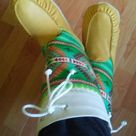 © Lynn Gehl, Ph.D. is an Algonquin Anishinaabe-kwe from the Ottawa River Valley. In 2017 she won an Ontario Court of Appeal case on sex discrimination in The Indian Act, and is an outspoken critic of the Algonquin land claims process. Recently she published Claiming Anishinaabe: Decolonizing the Human Spirit. You can reach her through, and see more of her work, at www.lynngehl.com. 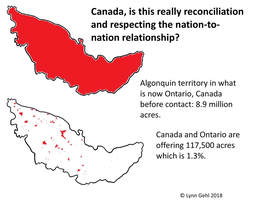 When it comes to Indigenous rights, it is part of Canada’s strategy to confuse its citizenry. Don’t be duped by the way Canada co-opts and re-defines terms. The truth is Canada is not signing treaties nor is Canada’s newly proposed Recognition and Implementation of Rights Framework[1] at all rooted in reconciliation, nation-to-nation, or an equal sharing of lands and resources. Rather, Canada will continue to sign agreements that grossly and narrowly define Indigenous rights as Canada allows them to be. While Canada calls these agreements “modern treaties”, the reality is Canada continues to refuse to meet international standards regarding Indigenous rights, and thus continues to be a colonial and genocidal agent. Remember Minister Jody Wilson-Raybould said the United Nations Declaration on the Rights of Indigenous Peoples (UNDRIP) is unworkable.[2] Indeed Minister Carolyn Bennett should be embarrassed about her role in this. When Justin Trudeau came to power as prime minister, it was in large part reactionary to the loathe many people felt for Stephen Harper. Regardless, for other people, Trudeau’s lofty feminist platform and promises of reconciliation and a new nation-to-nation relationship that included the implementation of the UNDRIP was immediately recognized for the lies they were. This was apparent when Trudeau promoted Deputy Minister of Indian and Northern Affairs Canada Michael Wernick to the position of Clerk of the Privy Council and Secretary to Cabinet. With this move Trudeau promoted the highest ranking civil servant to an even higher position.[3] To the wretchedness of many Indigenous people, it was in June 2016 when Trudeau divulged his thinking. He argued the federal government is the first order of government, the Provincial/Territorial governments the second, municipalities the third, whereas Indigenous government is the fourth and lowest order.[4] Clearly, Trudeau’s version of nation-to-nation was meaningless.[5] In the House of Commons Trudeau stated his new Indigenous Recognition and Implementation of Rights Framework would “include new legislation and policy that would make the recognition and implementation of rights the basis for all relations between Indigenous Peoples and the federal government moving forward.” He said this new legislation, now set to be tabled in the new year, will “recognize Indigenous governments, and ensure rigorous, full and meaningful implementation of treaties and other agreements.”[6] In line with lead colonial agent Trudeau, Bennett said following a co-development process with the Assembly of First Nations (AFN) she plans to replace policies governing comprehensive claims and self-government.[7] But keep in mind here that the AFN does not represent all Indigenous people in Canada. Rather, it is a body of First Nation chiefs and their membership. Justifiably, many Indigenous leaders are not happy with this approach. Chief Judy Wilson has argued, it makes more sense to implement UNDRIP as the new framework, rather than what Bennett is pushing, adding UNDRIP is the right direction for Canada to take.[8] Indigenous policy advisor and leading Indigenous thinker Russell Diabo adds, the Trudeau government is developing and domesticating a Canadian definition of UNDRIP to further colonize Indigenous Peoples.[9] He adds, the development of this framework has operated in secret, in a top-down process, and with particular organizations, chiefs, and participants. In taking this approach Canada has selected people who are willing to consent. Chiefs and people, for example, who are under the oppressors funding regimes. Diabo argues this framework is designed to terminate our existing sovereignty, self-determination, collective Aboriginal Title and Rights, and Treaty Rights as Indigenous Nations.[10] Thohahente Weaver, a First Nations band member of Kenhteke, the Mohawks of the Bay of Quinte, and outspoken critic, agrees with Diabo arguing, we offered the new comers peace and friendship. We presented them with our Wampum Belts, a traditional governance structure that collectively codify a good and honourable relationship, yet Canada continues to impose our extermination. That is what this new framework is about: The end of Indigenous jurisdiction.[11] Diabo argues through the new framework, and through the fourth level of government, Indigenous rights will be domesticated and defined under federal jurisdiction. Canada will do this by financially coercing and co-opting Indian Act bands to become federally recognized as an Indigenous government. He adds it is important to know that this new framework only concerns Indian Act reserve lands, which consists of only 0.2% of our broader traditional territories. It is in this way that Diabo argues this new framework is an extension of the 1969 White Paper on Indian Policy that called for converting Indian reserves into fee simple ownership and private property.[12] No doubt Trudeau Jr is completing his daddy’s work first proposed in the White Paper. Clearly Indigenous self-government means more than the administration of our own property on reserves. It must mean meeting international standards of Indigenous self-determination which means Canada must respect our rights to our own land and resources so Indigenous Nations can build our own structures of governance and law, and our own institutions such as child care agencies, schools, hospitals, laws, courts, and policing. After all the land and the gifts it provides are ours because we are the Indigenous people to these lands, not the settler people and their descendants. In his book “Reconciliation Manifesto: Recovering the Land, Rebuilding the Economy” Arthur Manual said Canada’s greatest betrayal of this century belongs to Justin Trudeau for the lies and manipulation that he campaigned on, that being that UNDRIP would be fully implemented once he was elected as prime minister. Adding Jody Wilson-Raybould is also a devastating disappointment to Indigenous people. As an Algonquin Anishinaabe-kwe from the Ottawa River Valley, a land and waterscape that due to processes of colonization I have never been afforded to live within, nothing speaks to me more about Trudeau’s lies and manipulation than the reality that Canada continues to stand still on their offer of 1.3% of our territory and a one-time buy-out of $300 million in the Algonquin of Ontario land claim. Trudeau’s Liberal government has not moved on this offer. It is through offers such as this and through the new Rights Recognition Framework that Canada’s genocide will continue. Nothing has changed, just more co-optation of the terms relied on. Canada’s Parliament squats on Algonquin land![13] [1]https://pm.gc.ca/eng/news/2018/02/14/government-canada-create-recognition-and-implementation-rights-framework [2]https://aptnnews.ca/2016/07/12/justice-minister-jody-wilson-raybould-says-adopting-undrip-into-canadian-law-unworkable/ [3]https://aptnnews.ca/2016/01/26/opinion-appointment-of-michael-wernick-as-top-federal-bureaucrat-in-ottawa-should-be-a-concern-for-aboriginal-peoples-especially-first-nations/?fbclid=IwAR17T-EscM85Qy-2WX19R1AiipoOej6kKo-LBNLEOOkFXUOCbkNdCdG19jM [4]http://www.cpac.ca/en/programs/headline-politics/episodes/47793606?fbclid=IwAR2v3R9nFRMmHi2pYlyt1AkTpK5eyw5D-vI8FFt1Sgd_m9NWGMyP5zUHSzs [5]https://static1.squarespace.com/static/5acc137850a54f99f58eb19a/t/5bd903d54ae237468519721e/1540948955470/Diabo+FPIC+Conference+Oct+25+18.pdf [6]https://aptnnews.ca/2018/12/04/trudeau-to-address-first-nation-chiefs-amid-growing-opposition-to-indigenous-rights-framework/?fbclid=IwAR2uIVhI3_s60cG91RCclpNESBbpD4tFBQ0ymMpBlRiQ4oeioiP8mnnItF4 [7]https://www.cbc.ca/news/indigenous/carolyn-bennett-specific-claims-overhaul-1.4930894?fbclid=IwAR1xehpJBH_afyXAEyOePMbAnDPBimeMEETp2Fykx6n3fSfXdTwe1zyqQgA [8]https://aptnnews.ca/2018/12/04/trudeau-to-address-first-nation-chiefs-amid-growing-opposition-to-indigenous-rights-framework/?fbclid=IwAR2uIVhI3_s60cG91RCclpNESBbpD4tFBQ0ymMpBlRiQ4oeioiP8mnnItF4 [9]https://static1.squarespace.com/static/5acc137850a54f99f58eb19a/t/5bd903d54ae237468519721e/1540948955470/Diabo+FPIC+Conference+Oct+25+18.pdf [10]https://static1.squarespace.com/static/5acc137850a54f99f58eb19a/t/5bd904268985831ed03ba163/1540949031200/DOL+TC+INM+Brochure+Sept+23+FINAL.pdf [11]http://www.windspeaker.com/news/windspeaker-news/youth-rally-on-afn-takes-framework-message-to-afn-assembly/?fbclid=IwAR26fdEGv8aZhM7_UFPpZfof9v8AriNgVGj58mTyYabvKZM_0yH-Cj5QS84 [12]https://static1.squarespace.com/static/5acc137850a54f99f58eb19a/t/5bd90455758d468d5107cff0/1540949077581/DOL+TBR+INM+Backgrounder+Sept+7+18+FINAL+%2B.pdf [13]https://www.lynngehl.com/black-face-blogging/algonquin-anishinaabe-land-acknowledgement 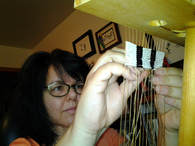 © Lynn Gehl, Ph.D. is an Algonquin Anishinaabe-kwe from the Ottawa River Valley. In 2017 she won an Ontario Court of Appeal case on sex discrimination in The Indian Act, and is an outspoken critic of the Algonquin land claims process. Recently she published Claiming Anishinaabe: Decolonizing the Human Spirit. You can reach her through, and see more of her work, at www.lynngehl.com. 11/8/2018 17 Comments I Am Only A WomanIn the Anishinaabe world it was from Creator’s Dream that all was created. During the First Order of Creation the four sacred elements of Water, Rock, Wind, and Fire were brought into existence; during the Second Order of Creation the plant nations were brought into existence; during the Third Order of Creation the animal nations were brought into existence. Once all else was here on our Mother Earth, doing all the things they do, and once everything was beautiful and in its place, Creator began to lower humans to the Earth. At this time, during the Fourth Order, humans were gifted with free will and the intelligence of the mind. Within the Anishinaabe tradition it is valued that all the beings before humans are more intelligent. We value that Water, a member of the First Order, was born knowing what to do; and trees, although a little bit further from Creator and born in the Second Order, also hold a lot of Creator’s knowledge and wisdom, thus they know how to stand straight with integrity. We also value that although the Animal beings are born in the Third Order, who hold less knowledge than the tree nation yet more of Creator’s knowledge than humans do, are our teachers in the way they carefully and lovingly teach their young. And we value that humans born in the Fourth Order, despite the gift of our minds, require even more teachings than all the other beings. We value that we are only human and not as intelligent as all that came before. Within this understanding I know I am only a woman. As many people know one of the main differences between Indigenous people and our knowledge philosophy and most, if not all, settler Canadians, is that Indigenous people value the Original Dream and Creator’s Laws. Another way to understand this difference is to value that Indigenous assumptions, beliefs, teachings, and rituals are intentionally and consciously designed around natural features on the Earth and the knowledge inherent. This serves to keep us rooted within Creator’s Law and the naturalistic tradition, also known as the naturalistic paradigm. The short story is that the naturalistic paradigm places natural law at its core whereas humans are placed after, but at the same time within, the broader context of all the other beings such as the four sacred elements. The humanistic paradigm is different from the naturalistic paradigm. The humanistic paradigm places humans above the natural world and above all the other beings versus after all else and within it. This includes all human creations such as our governance and economic traditions and this includes brick and mortar structures. These entities are all situated above the natural world. They are not designed to work with Creation and natural law; rather they are designed to control and monopolize the natural world. While humans are smart and able to create amazing things with the gift of our minds; our egos, greed, selfishness, and arrogance are the barriers to respecting the importance of the natural world and all that came before our arrival. This unexamined default way of being is what is meant by the Anishinaabe saying, “humans are pitiful”. As we are all beginning to learn the humanistic paradigm and all the inventions that emerge from it, is devastating our collective land and waterscapes, so much so that our water is polluted with multiple layers of different kinds of pollution: debris such as plastic and other forms of garbage; organic and inorganic chemical compounds such as dioxins, heavy metals, and pharmaceuticals; biological and sewage waste; and radioactive particles. Again, this is the result of human beings placing their needs and desires over and above all the beings within the natural world, which is a particular kind of arrogance over Creator’s Law. Creator, I think, must be sad to have gifted humans with a mind that so quickly defaults to all that is inherent in the Wendigo: Ego, greed, selfishness, and arrogance. I know I am and so are many of my friends. The problem in coming to value our own complicity in the destruction of the natural world is that most people are suffering from “cognitive paradigm paralysis” (see Ladner, 2003). What I mean by this is that many humans are unable to think conceptually about the paradigm they live within, and thus unable to think critically about the limitations of that very paradigm ‒ again the humanistic paradigm ‒ and value that there is a better and more intelligent option waiting for them to shift into. The culprit is human cognition. The mind is not as smart as we think it is. A telling example of people’s inability to understand that they are stuck within the limiting and irrational humanistic paradigm is the fact that when a brick and mortar Church, Mosque, or Synagogue is vandalized, people are disgusted and outraged and they quickly refer to it as a “hate crime”; yet when a natural sacred place that has a 5,000 year old history, such as Akikpautik and Akikodjiwan, located within the natural world of the land and waterscape of the Ottawa River is further desecrated, these same people are unable to shift conceptually and thus value that this too is indeed a hate crime. This inability to shift conceptually into the naturalistic paradigm and truly value Creation and all that came before humans, continues to harm all beings not just Indigenous nations and peoples. Akikpautik and Akikodjiwan are the very land and waterscapes where Creator placed the First Sacred Pipe, the ultimate ritual and ceremony of reconciliation. The Spirit of the West Wind gifted his son Nanaboozo with the Sacred Pipe for fathers and sons, mothers and daughters, and citizens of all nations to assist in reconciliation. Sadly, Akikpautik and Akikodjiwan are now slated for further desecration through the construction of Windmill’s Zibi condominium and retail complex, a so-called One Planet Community (now under Theia Partners and Dream Unlimited Corporation). What is particularly bizarre is that this desecration is happening just upstream from Canada’s Parliament. While I understand that I am only a woman brought to this Earth after all else and thus I am less intelligent, many know I have been on a long learning journey piecing together what Canada has done, and continues to do, to Indigenous nations and peoples. What I now know for sure is the most effective way to destroy a people is to destroy their sacred beliefs, stories, and places. It is a complete abomination that the further desecration of this sacred place of reconciliation is happening during the time of the Liberal government’s reconciliation and feminist platform. Here are a few resources if you wish to learn more about the sacredness of Akikpautik and Akikodjiwan:
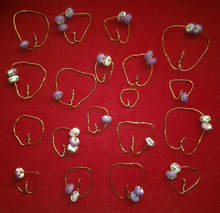 © Lynn Gehl, Ph.D. is an Algonquin Anishinaabe-kwe from the Ottawa River Valley. In 2017 she won an Ontario Court of Appeal case on sex discrimination in The Indian Act, and is an outspoken critic of the Algonquin land claims process. Recently she published Claiming Anishinaabe: Decolonizing the Human Spirit. You can reach her through, and see more of her work, at www.lynngehl.com I decided to take the time and write this Algonquin Anishinaabe land acknowledgement. Go ahead and print it out and use it when you are opening an event in Algonquin territory. Currently we are on Algonquin Anishinaabeg traditional territory. The Algonquin were one of the first Indigenous Nations that Champlain recorded as he travelled up the Kichesippi, now called the Ottawa River. Algonquin territory consists of 48 million acres inclusive of rivers, lakes, boreal forests, rock, trees, four legged, winged, and finned. Through the creation of Upper and Lower Canada, now Ontario and Quebec, and through the French surrendering and ceding land that they did not own, the Algonquin Anishinaabeg have been divided along the very river that once united us. Through the overlay of Canada the nation state and the imposition of a provincial federal order, the Algonquin are divided by language, law, and religion. While 39 million acres is in Quebec, 9 million is in Ontario. Through processes of genocide inherent in processes of colonization, which continues today, the Algonquin have been relegated to small plots of land. There are ten federally recognized communities made up of registered status members: one in Ontario and nine in Quebec. As suggested these communities reside on only small fractions of the larger Algonquin Anishinaabeg traditional territory. Pikwàkanagàn First Nation’s land base consists of a mere 1,561 acres; Barriere Lake only 59; while Wolf Lake has been denied a land base altogether. There are also many communities in Ontario, made up of mostly non-status members, that have been more formally organized to accommodate the federal government’s need to define Indigenous rights in narrow terms and they all lack their own collective land bases known as reserve lands. The Kichesippi has been subject to the logging, hydroelectric, nuclear power, and the fishing and sport hunting industries. These industries have clogged the Great River, flooded important landscapes, and are currently dumping radio-active particles in the river. What is more, the nuclear industry is also warming the river using the water to cool down nuclear reactors. Although the Algonquin Anishinaabeg were emissaries during the 1764 Treaty at Niagara, and many of the men fought on the side of the British during the 1776 American revolution, and during WW1 and WW2, Algonquin were and are continually denied the jurisdiction to their land and resources. Indigenous knowledge philosophy is a life way that situates humans within a broader context of the natural world versus a religion selectively practiced. Within this philosophy, the Four Sacred Elements ‒ Water, Rock, Wind, and Fire ‒ are valued as more intelligent. As such, places where they intersect are sacred. In addition, while many people think Indigenous people of Turtle Island lack a tradition of symbolic literacy, in actuality the Anishinaabeg inscribed stories, knowledge, and important messages within the land and waterscapes of their territory. Akikpautik is where Creator placed the First Sacred Pipe, the ultimate expression of Reconciliation between Nations, Humans, and the Natural World. Today there are more non-status than status Algonquin and many of us reside outside of our traditional territory. 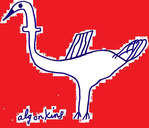 Lynn Gehl, Ph.D. is an Algonquin Anishinaabe-kwe from the Ottawa River Valley. In 2017 she won an Ontario Court of Appeal case on sex discrimination in The Indian Act, and is an outspoken critic of the Algonquin land claims process. Recently she published Claiming Anishinaabe: Decolonizing the Human Spirit. You can reach her through, and see more of her work, at www.lynngehl.com 8/15/2018 1 Comment On Smashing IconsMany of the descendants of settlers – aka Canadians – are perturbed or in an uproar about the process whereby statues of the prominent early colonial and genocidal men are being taken down and relegated to storage rooms. We all know the names of the men because they have become icons of what is Canada. Icons, though, when you add power are more about propaganda than knowledge and truth. In the work I do I have been exposed to far too many settler thoughts that these statues need to remain erected in public settings if only as a measure so Canadians do not forget what happened and further as a way to ensure the genocide does not happen again. To this I have a few things to say: First, the descendants of settler people do not get to have a say here. Rather, it is Indigenous people who have the most important knowledge on this topic. This is a good time for the descendants of settler people to listen versus talk. After all, this is the reasonable and moral thing to do: to value that as the people who have benefited more from colonization, your thoughts and opinions are not important and should not be made audible. Second, descendants of settler people need to value that while the statues are coming down, Canada does indeed continue today with its colonial genocidal laws, policies, and practices such as the land claims process. The long-time presence of the statues has not changed Canada’s genocidal policies, not at all. As an example, the Algonquin in Ontario continue to be denied access to their land and resource rights. As a matter of fact we are only offered 1.3% of our territory and a $300 million one-time buy-out in our current land claim, yet we all know a nation is not a nation without the land and resources needed to govern its citizenry. Third, while Indigenous people may be relieved to see the icons taken down, the Liberal government will be the real winner because they will receive accolades, and votes, for removing them. In this way the practice by the Prime Minister and his cabinet is about nothing more than about manipulating the masses through optics and circumventing what is really needed: the end of the genocide in Canada. If you do not like what I say here, this is due to the cognitive dissonance inherent in iconoclasm. Keep in mind through that the best and most important knowledge is emotional. Hang on to your heart and listen to the voices that matter most: Indigenous people. And then be in an uproar about the reality that Canada’s genocide continues despite the presence or removal of the deceptive icons that Canada calls its leaders. The human spirit moves through the heart. Morals take the same pathway. Cognitive dissonance is more about ego versus morality.  Lynn Gehl, Ph.D. is an Algonquin Anishinaabe-kwe from the Ottawa River Valley. In 2017 she won an Ontario Court of Appeal case on sex discrimination in The Indian Act, and is an outspoken critic of the Algonquin land claims process. Recently she published Claiming Anishinaabe: Decolonizing the Human Spirit. You can reach her through, and see more of her work, at www.lynngehl.com It is often said that one of the culprits of Western culture and the process of colonization is the way it converted larger communities and families into nuclear homes with individualistic and/or egotistical values. Historically and traditionally here on Turtle Island we lived within communities where we were all related to one another and where we all had a role in teaching children values and morals. For the most part these values and morals were embodied through teachings, songs, and rituals. Once these values and morals were embodied, during times when our bodies and minds failed us, family and community members would remind one another of their collective obligations. In this way family and community members were an important element of Indigenous governance tradition. Oftentimes some people will actually excuse a family member’s lack of good moral judgement through statements such as, “I am not responsible for her actions” or “she is doing her job and she really is a nice person”. This line of reasoning, though, is rooted in an oppressive governance structure that relies on individualistic and/or egotistical values, and must be reconsidered; this is especially so if one claims to be leftist. Said another way, family and community members who remain silent as they stand beside violators of human rights are themselves complicit in the violation. And further, through their silence they remain stuck within an oppressive governance system; an oppressive system that is comparable to the system that has forced many families to find refuge in Canada. The contradiction of a young family finding refuge in Canada, yet that same family then denies Indigenous women and children their land and treaty rights, exists in plain sight for all to see.  Lynn Gehl, Ph.D. is an Algonquin Anishinaabe-kwe from the Ottawa River Valley. In 2017 she won an Ontario Court of Appeal case on sex discrimination in The Indian Act, and is an outspoken critic of the Algonquin land claims process. Recently she published Claiming Anishinaabe: Decolonizing the Human Spirit. You can reach her through, and see more of her work, at www.lynngehl.com All too often settler people say to me, “The Algonquin have to get it together and stop being so divided”. Although I am Algonquin Anishinaabe, a person does not have to be Algonquin to carry a critical thinking lens or framework in understanding that the issue with the denial of Algonquin rights, the destruction of our land, the pollution of the Ottawa River, and the destruction of our sacred places is in fact a settler issue and a settler government issue. It is not an Algonquin issue; not at all. It is not too difficult to reason that here in what has become the nation state called Canada, settlers have benefited from colonization in enormous and lucrative ways; in more ways than the Algonquin have. Through the construction of Canada settler people have had greater access to Indigenous land and settlers have benefited more from the resources mined and pilfered from the land. There are more settlers on Indigenous lands, and it is their settler government that continues to spend millions and millions of dollars to ensure the Algonquin remain in hardship, in poverty, and divided. Let’s face it, as long as the Algonquin remain divided Canada can, and will, blame us for the very divide Canada has manufactured ‒ again through the resources pilfered from Indigenous land. Through the settler court system, from the 1973 Calder decision through to the 2017 Tsilhoqot’in decision, Indigenous people have won the recognition for our rights yet Canada continues to deny these rights to us. Indigenous people have also placed their bodies on the land over and over and over again. It is about time settler people stop with the practice of blaming Algonquin people for the ongoing desecration and pollution of the land and water that we all need; trees and animals included. Said another way, the time is ripe for settlers to stop blaming Algonquin ancestors and fellow Algonquin who walk the earth today for what their ancestors did and their current settler government continues to do to the Four Orders of Creation. Too many so called friends and acquaintances continually say ignorant things to me over and over again about the Algonquin. They blame us. This has to stop. Settlers, you own this situation. It is time for you to put your bodies on the land and on the line. Mortgage your homes; sell you summer homes too; then there is the content of those homes, it can all go too. Really serve the cause. You can do this. Whatever steps you take to generate the change you seek and the change we all need, stop with the excuse of blaming on the Algonquin for the continued pilfering of the land that you mostly benefit from. Settlers stop externalizing your responsibility. Settlers, you own this; not the Algonquin Anishinaabeg.  Lynn Gehl, Ph.D. is an Algonquin Anishinaabe-kwe from the Ottawa River Valley. In 2017 she won an Ontario Court of Appeal case on sex discrimination in The Indian Act, and is an outspoken critic of the Algonquin land claims process. Recently she published Claiming Anishinaabe: Decolonizing the Human Spirit. You can reach her through, and see more of her work, at www.lynngehl.com 3/15/2018 4 Comments Angry Bitches Unite!Settler people must stop judging Indigenous women in petty and dismissive ways such as nasty name calling. Recently, I had a few experiences that were really telling of questionable settler thinking and a sure indication that they remain unaware and ignorant of the legitimate manifestations of structural oppression and how best to address it. One individual called me “needy”, another called an Anishinaabe women “a wimp” and further “too angry”. There is so much I could say that is wrong about settler people name calling, regardless I will remain with offering a bulleted point list as I am sure I can make my position succinctly.
If you lack the intellectual ability to understand Indigenous women and ALL the knowledge we have, have the intelligence to listen versus silence them through name calling.  Lynn Gehl, Ph.D. is an Algonquin Anishinaabe-kwe from the Ottawa River Valley. In 2017 she won an Ontario Court of Appeal case on sex discrimination in The Indian Act, and is an outspoken critic of the Algonquin land claims process. Recently she published Claiming Anishinaabe: Decolonizing the Human Spirit. You can reach her through, and see more of her work, at www.lynngehl.com “When the settler community denies us our sacred place, then I must wonder if they even regard us as human beings.” Albert Dumont Kwey Senator and Chair Lillian Dyck, Senator and Deputy Chair Scott Tannas, and all members of the Standing Senate Committee on Aboriginal People (APPA), As many know, one of the main differences between Indigenous people and most if not all settler Canadians and our knowledge philosophies is that Indigenous people value the original dream of the Creator and Creator’s natural law. Another way to understand this difference is to value that Indigenous assumptions, beliefs, knowledge, teachings, and rituals are intentionally and consciously designed around natural models and features. This serves to keep us rooted within the naturalistic tradition. In short, the naturalistic tradition places natural law at its core where humans are placed within the context of all the other beings. The naturalistic tradition is different from the humanistic tradition. The humanistic tradition places humans above the natural world and above all the other beings. This includes all of humanity’s creations such as governance and economic traditions. They are not designed to work with Creation; rather they are designed to control and monopolize Creation. While humans are smart beings and we are able to create amazing things with the gift of our mind, our egos and blind selfishness of the paramount importance of the natural world, and that humans too readily default to, is our own worst enemy. This is what is meant by the Anishinaabe philosophy and saying, ‘humans are pitiful’. As we all know the humanistic tradition and inventions that emerge from it is devastating our collective land and waterscapes, so much so that our water is polluted with layers and layers of different kinds of pollution: debris such as plastic and other forms of garbage; chemicals such as organic compounds like dioxins, heavy metals, and pharmaceuticals; sewage and biological waste; and radioactive particles. Again, this is the result of human beings placing their needs over and above all the beings within the natural world. The problem is that most people are suffering from ‘cognitive paradigm paralysis’, meaning they are unable to think conceptually about the paradigm they live within, and thus unable to think critically about the limitations of their paradigm ‒ the humanistic paradigm ‒ and value that there is a better more intelligent option waiting for them to shift into. The culprit is the pitifulness of human cognition. A telling example of people’s inability to understand that they are stuck within the irrational humanistic tradition / paradigm is the fact that when a brick and mortar Church, Mosque, or Synagogue is damaged, people are disgusted and outraged and they call it a hate crime; yet when a natural Indigenous sacred place such as Akikodjiwon and Akikpautik located within the natural world of the land and waterscape of the Ottawa River is further desecrated these same people are unable to shift conceptually and value that this too is a hate crime. This inability continues to harm Indigenous people as well as all people and Creation. Akikodjiwon and Akikpautik are the very land and waterscapes where Creator placed the First Sacred Pipe, the ultimate ritual and ceremony of reconciliation. The Spirit of the West Wind gifted his son Nanaboozo with the Sacred Pipe for fathers and sons, mothers and daughters, and citizens of all nations to assist in reconciliation. Sadly, Akikodjiwon and Akikpautik are slated for further desecration through the construction of Windmill’s condominium and retail complex. This is happening just upstream from Parliament Hill. As many know I have been on a long learning journey piecing together what Canada has done, and continues to do, to Indigenous peoples. What I know for sure is the most effective way to destroy a people is to destroy their sacred beliefs, stories, and places. It is an abomination that the further desecration of this sacred place of reconciliation is happening during the time of the Liberal government’s reconciliation platform. You are likely more familiar with my recent work challenging the sex discrimination in the Indian Act. Over the last few years I have also been working with allies from Free the Falls and Stop Windmill and Indigenous people and Elders regarding the need to respect Akikodjiwon and Akikpautik. We are at a loss about where to turn and so I turn to members of the Standing Senate Committee on Aboriginal People. Additional resources:
 Lynn Gehl, Ph.D. is an Algonquin Anishinaabe-kwe from the Ottawa River Valley. In 2017 she won an Ontario Court of Appeal case on sex discrimination in The Indian Act, and is an outspoken critic of the Algonquin land claims process. Recently she published Claiming Anishinaabe: Decolonizing the Human Spirit. You can reach her through, and see more of her work, at www.lynngehl.com 1/14/2018 0 Comments Why Settlers Rely on Nasty NamesMany Layers of Structural Oppression The knowledge of living as a structurally oppressed person is foremost held within the everyday lived experiences of the oppressed. The location of the knowledge of oppression resides within the bodies and hearts of the very people. As such, the wisdom needed to remedy structural oppression is located within the critical thinking minds of the oppressed themselves. Not all structurally oppressed people are able to move the knowledge from their bodies and hearts to the location of their minds. Remember that critical thinking is a gift and a skill. Most people know we live in a society that oppresses women. Few people will deny this. But we need to keep in mind that heterosexual, able-bodied, white women only experience one layer of structural oppression, and therefore only know one layer of the knowledge. Further, they lack the intersectional knowledge located within the spaces of having more than one layer of structural oppression. It can be said that the level of knowledge within the “Well of Wisdom”, needed to challenge oppressive structures that white women have, is not deep and murky. This sounds unkind but this is true. This is one reason why older white feminism was critiqued by women of colour. While white women were happy with the shifts made, women of colour were not ‘celebrating the continuation of the oppression’ as the shifts were mostly the assimilation of white women into patriarchal systems. Intersectional Feminism While white women do have some of the knowledge of structural oppression and the wisdom of how to address it, it stands to reason that women of colour will have more. What is more, women of colour will also have the intersectional effects of being both a woman and a woman of colour; where the experience of intersectional effects mean they also know the inter-acting results of experiencing two levels of structural oppression. What this means is the level of knowledge in the “Well of Wisdom” that women of colour hold to challenge oppressive societal structures is deeper and more murky than the level white women have. While women of colour know more than double the knowledge of structural oppression over white women, it stands to reason that women of colour with a disability embody even more of the knowledge and wisdom: more than three times the knowledge in that again they also hold the intersectional effects contained. We can keep adding to this. For example, a woman of colour with a disability and who is gender non-specific will even have more of the knowledge and wisdom needed to address structural oppression. In sum, the knowledge of structural oppression is located within the lived experiences of the oppressed where the multiply oppressed have more of the knowledge and wisdom needed to challenge it. My goal here is not to set up a knowledge competition but rather to illustrate why it is that people under more levels of oppression are able to identify the limitations of the less oppressed, that being white women. It is because they hold more of the knowledge. Cognitive Dissonance is Unpleasant All too often when white women take on a social justice issue, where they lack a deeper understanding of the knowledge of structural oppression, they are then faced with situations of cognitive dissonance when a person who is more oppressed speaks up letting them know they are not addressing issues in a way that the more oppressed need them to be addressed. Experiencing cognitive dissonance is emotional and the feelings that emerge are negative: embarrassment, shame, anger, hate, toxicity, lateral violence, arrogance, and ignorance. The good thing is the best learning is emotional; not nice though. What happens all too often when white women are informed or told about their ignorance they become reactionary so much so that they can and will rely on and hurl nasty adjectives to describe the person who was brave enough to speak up. Interestingly, I have come to know that the nasty adjectives actually best describe the less oppressed person’s emotional state brought on by their cognitive dissonance rather than the more oppressed brave person. The emotions are a result of them being challenged in ways they are ignorant about; or result from them being called out about their unspoken political agenda that further oppresses such as them supporting the current Minister of Status of Women Maryam Monsef who is not addressing sex discrimination in the Indian Act, the land claims process, and the destruction of sacred Indigenous land and waterscapes. On White Privilege; We Need White Women, But … While it is indeed a wonderful thing that white people are now learning about, reading about, thinking about, and talking about white privilege, white people do not have the everyday lived experience of being at the back end of white privilege where as such they do not hold the monopoly of knowledge on white privilege. It is crucial to keep in mind they do not and cannot ever hold the depth of knowledge and wisdom that people of colour hold on this topic. In short, because it is not their everyday lived misery they do not know it wholistically, deeply, or completely. Some people may be inclined to think, if white women do not hold enough of the knowledge of structural oppression, and if people who are more oppressed are not happy with the actions of white women, then they need to take a lead role in the process of challenging structural oppression and forget about white women. This line of thought is reactionary and not the thinking of a genuine social justice seeker, not at all. Asking white women to reflect on who has more of the knowledge is valid; it does not mean the more oppressed don’t need them in the struggle. Of course we do. What we need is for them to take a back seat or follow and serve the more oppressed. What is more, the less oppressed people who argue there is the need for the more oppressed to be nicer when they encounter settler ignorance really need to think critically about intersectional feminism, and stop burdening more oppressed people with settler emotions. I have produced a large volume of short reading materials that enhance the knowledge shared in this blog: Intersectional Oppression: https://journeymagazineptbo.com/2016/09/14/2830/ Follow the Turtle: https://www.lynngehl.com/follow-the-turtle.html Critical thinking and the Charity Model: www.lynngehl.com/black-face-blogging/critical-thinking-and-the-charity-model-of-social-justice Kawartha Truth and Reconciliation Support Group on Maryam Monsef: http://www.huffingtonpost.ca/lynn-gehl/canada-is-carrying-out-cultural-genocide-with-a-smile_a_23204482/ http://www.windspeaker.com/news/opinion/opinion-minister-monsef-disappoints-on-bill-s-3-and-continues-the-discrimination/ White Woman’s Gaze: https://www.lynngehl.com/black-face-blogging/that-white-womans-gaze On Nice People: https://www.lynngehl.com/black-face-blogging/nice-people-scare-me On Reconciliation: http://muskratmagazine.com/celebrating-canadas-150th-featuring-the-desecration-of-an-indigenous-sacred-place/ 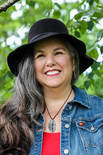 Lynn Gehl, Ph.D. is an Algonquin Anishinaabe-kwe from the Ottawa River Valley. In 2017 she won an Ontario Court of Appeal case on sex discrimination in The Indian Act, and is an outspoken critic of the Algonquin land claims process. Recently she published Claiming Anishinaabe: Decolonizing the Human Spirit. You can reach her through, and see more of her work, at www.lynngehl.com Critically thinking people in Peterborough have been working long and hard on issues of social justice from the perspective of multiple intersectional oppressions, meaning colour, gender, disabilities; yet it appears that not much progress is being made. Of course this has to do in large part with oppressive power, but it also has to do with a lack of critical thinking about the limitations of the Charity Model of social justice. While compassion is valued and needed, the Charity Model is for the most part a back-end focus to social justice issues and thus not capable of addressing the deeper structural issues oppressed people face. In short, back end compassion alone is not enough; front end solutions are needed. Further, oppressed people want and need more than being patronized with small tokens of charity at the back-end. They also want more than being someone’s “feel good moment” where they are offered charity so a privileged person can feel that they did a good thing at Christmas time. Yes, this actually continues to happen. It is often said that social justice awareness, understanding, knowledge, wisdom, and actions must emerge from the location of intersectionally oppressed people. This is mostly true as they embody, live, and have much of the knowledge of oppression. But it is also said there is the need to embrace genuine critical thinkers to guide processes of social justice efforts to a real and more meaningful place. Unfortunately critical thinking is also not well understood where as a result sometimes a “token critical thinker” is relied on when addressing social justice issues. Critically thinking (with some criticizing too) about critical thinking?
When it comes to addressing social justice issues, critical thinking is a process of thinking deeply about the limitations of society's oppressive structures such as employment standards and requirements, standard operating procedures, policies, and legislation that are causing certain people from living a good life. Critical thinking is also a way of being and acting that challenges, at the front end, oppressive structures for the purpose of serving people. Critical thinking and acting on it is much more than relying on the Charity Model at the back-end. Here is a short video: https://www.youtube.com/watch?v=ZLyUHbexz04 What has caused me to think about this issue of the limitations of the Charity Model and the need for genuine critical thinking in social justice? Recently a video was posted in a facebook group titled “Carol's Place” that was clearly rooted in the Charity Model of social justice. In this video a privileged person was walking around a city offering small tokens to homeless people thinking he was doing a good thing when in fact what he was really doing was exploiting the homeless for the purpose of his own “feel good moment”. Sadly a few members of the Peterborough community clicked like on this posting thus endorsing the Charity Model. This small example of a misplaced facebook posting is a sure indication that some people in Peterborough remain stuck in a Charity Model and further, lack the gift of critical thinking. (I have chosen not to post this link here as I do not want to give it anymore currency than it is already gaining.) It is my thought that the Charity Model of social justice emerges from: the inability to really value where structures of oppression come from; the inability to really value that oppressed people are indeed consciously oppressed through standard operating practices, policies, and laws; and the inability to perceive that Indigenous people do indeed have a valid knowledge system and paradigm that is being actively thwarted and denied by the government of Canada. As a result, sometimes the Charity Model marches forward only addressing back-end solutions and failing to address the root causes of structural oppression. Here are two insightful videos that address the deeper issues with the Charity Model. In the second video the speaker uses the anger that exists between “the haves” and “the have nots” to perform what he knows. As a man he is more easily afforded the right to be mad. https://www.youtube.com/watch?v=0Wmtjnp-7wg https://www.youtube.com/watch?v=telgvKBdY9E The City of Peterborough can do better. 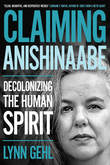 Lynn Gehl, Ph.D. is an Algonquin Anishinaabe-kwe from the Ottawa River Valley. In 2017 she won an Ontario Court of Appeal case on sex discrimination in The Indian Act, and is an outspoken critic of the Algonquin land claims process. Recently she published Claiming Anishinaabe: Decolonizing the Human Spirit. You can reach her through, and see more of her work, at www.lynngehl.com 11/22/2017 1 Comment What Does "Nation to Nation" Mean?On Tuesday October 17, 2017 the Standing Committee of Indigenous and Northern Affairs discussed the specific claims and the comprehensive land claims process. In this short video clip conservative MP Kevin Waugh asks Senior Assistant Deputy Minister of Treaties and Governance and Joe Wild of Indian Affairs and Northern Development the question, “What is nation to nation anyway?” Wild’s response is telling. Wild explains that Canada defines nation to nation only in terms of the Indigenous people sitting at the table with Canada. He offers no discussion at all in terms of it meaning sharing the land and resources with Indigenous nations on a more equal basis which is what genuine nation to nation has to mean. Watch the entire meeting at this link: http://parlvu.parl.gc.ca/XRender/en/PowerBrowser/PowerBrowserV2/20171017/-1/28107?Language=English&Stream=Video&useragent=Mozilla%2F5.0%20(Windows%20NT%2010.0%3B%20Win64%3B%20x64)%20AppleWebKit%2F537.36%20(KHTML%2C%20like%20Gecko)%20Chrome%2F62.0.3202.94%20Safari%2F537.36 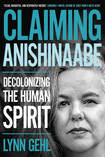 Lynn Gehl, Ph.D. is an Algonquin Anishinaabe-kwe from the Ottawa River Valley. In 2017 she won an Ontario Court of Appeal case on sex discrimination in The Indian Act, and is an outspoken critic of the Algonquin land claims process. Recently she published Claiming Anishinaabe: Decolonizing the Human Spirit. You can reach her through, and see more of her work, at www.lynngehl.com. 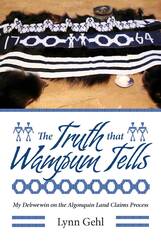 This is an excerpt from my book The Truth that Wampum Tells: My Debwewin on the Algonquin Land Claims Process. How land claims settlements are achieved is arguably the biggest issue. Essentially, they require the parties to agree on a set of rights, compensation and other benefits. It is John A. Olthuis and H.W. Roger Townshend’s (1996: 10) contention that negotiations guide the process to finalizing settlements. Coyle explains that the central component of settlements is land and land-related rights, where the latter may include “sub-surface resources, waters in the claim area, forests, wildlife and fisheries, protecting cultural artifacts, rights of access and rights of the Aboriginal group to manage and govern settlement lands.” Coyle notes that land acquisitions are achieved through First Nations using settlement money to purchase their land on the open market, or by some other means such as the province transferring Crown lands to Canada in trust for the First Nation. Interestingly, in assessing monetary compensation amounts, there are no criteria in Canada’s land claims policy. However, the policy does suggest that compensation can be resolved through cash, resource revenue sharing and even government bonds (Coyle 1997: 67-68). That said, in actuality, it is Andrew Woolford’s (2004: 121) contention that settlement mandates are actually handed down to federal and provincial negotiators from upper echelons who in reality negotiate with their own government in terms of moving outside of the relegated mandate parameters. This of course implies that the land claims process is not really a negotiation process between Indigenous nations and the governments of Canada. Rather, the negotiating occurs between government employees. References: Coyle, Michael. 1997. “Land Claims Negotiations in Canada.” In Stephen B. Smart and Michael Coyle (eds.), Aboriginal Issues Today: A Legal and Business Guide. North Vancouver: Self-Counsel. 53-78. Olthuis, John A., H.W. Roger Townshend with contributions by Roger A. Justus, Nancy J. Kleer and Evelyn J. Baxter, Morris/Rose/Ledgett. 1996. “Is Canada’s Thumb on the Scales? An Analysis of Canada’s Comprehensive and Specific Claims Policies and Suggested Alternatives.” For Seven Generations: An Information Legacy of the Royal Commission on Aboriginal Peoples. cd-rom. Ottawa: Canada Communications Group-Publishing. 1-118. Woolford, Andrew John. 2004. “Negotiating Affirmative Repair: Symbolic Violence in the British Columbia Treaty Process.” The Canadian Journal of Sociology 29, 1: 111-44. Please like and share this blog.  Lynn Gehl, Ph.D. is an Algonquin Anishinaabe-kwe from the Ottawa River Valley. She has a section 15 Charter challenge regarding the continued sex discrimination in The Indian Act, and is an outspoken critic of the land claims process. Her book The Truth that Wampum Tells: My Debwewin of the Algonquin Land Claims Process offers an insider-Indigenous analysis of the Algonquin land claims process in Ontario. She has is new book titled Claiming Anishinaabe: Decolonizing the Human Spirit with the University of Regina Press scheduled to be published in the fall of 2017. You can reach her through, and see more of her work, at www.lynngehl.com. Who is historian Lindsay Lambert? Who is film maker Andrée Cazabon? Who is lawyer Michael Swinwood? Who is the group Free the Falls? Who is the group Stop Windmill? The Algonquin Anishinaabeg are in pretty dire conditions. We have never had a treaty and our nation has been divided by imposed British and French laws, imposed English and French language, and imposed religions, as well as imposed provincial borders. The situation of the Algonquin was largely accomplished through do-gooders also known as people with so-called good intentions. One example is the residential school system imposed by Canada and the churches. Another example is and continues to be “helping” Indigenous people become more civilized through the land tenure system. In addition there are all the earlier anthropologists who were actually agents of the state. Through decolonization and Indigenous awareness of these do-gooder agents of the state, and the birth of theoretical frameworks such as feminism, critical theory, anti-colonialism, allyship, and more recently Indigenism many people are now asking tough questions about people who come in to our communities claiming to be a helper. Being a shkaabewis or in English "a helper" is a place of honour and a place of humbleness where it is now expected that they must tell us: Who are they? Who are they related to? What do they want? Why do they want it? How did they determine and define the help they seek to offer? Who is funding their efforts? How do they plan to meet our needs? What are their unstated political affiliations? What is their strategy? Who are they accountable to? How will they allocate funds the process may generate? How are they assuring that friends have not biased them? Asking these questions are now the accepted way to protect community members and assuring the community’s needs are paramount, but also as a way of assuring that the effort being taken is indeed genuine and legitimate. In terms of the latter, if the effort is not viewed as legitimate community support for the effort and the mobilization of the effort will be hindered. This would be counter-productive to the goal. Contrary to what many may think I ask these questions not to be harmful. Rather, I ask for valid reasons. I ask because I want the larger Algonquin Anishinaabeg to be able to trust these people if they are indeed worthy, and I also ask these questions as a measure to assure what they are doing is a good thing. As I have said legitimacy is important. If Algonquin do not see the person or the effort as legitimate this is not a good thing. If these helpers are genuine they will appreciate the need to assure that their role and effort is genuine and legitimate. In short, they will value the questions. We have all heard of, and many of us personally know, individuals who come into our families and into our communities offering us help, such as giving us their services, time, shelter, food, clothes, and money. Unfortunately, what some of these “helping people” count on is for members to be too busy where as such they are unquestionably grateful for the help being offered. This is the ultimate of vulnerability. As a result of the great need, and the imposition of the survival mode imposed on them by Canada, many of us cannot stop, think, and ask these hard questions. But some can and this is a good thing not a bad thing. Poor families and Indigenous communities are particularly vulnerable. We all know this and so do others. Even today our families and communities continue to be infiltrated by outsiders who are selfishly seeking research needs, the need for a spiritual experience; the need to be perceived as a good person; and there are people who want to sexually exploit the exotic and young girls and boys, persons with disabilities, the elderly, sometimes even babies. As suggested helpers are not limited to what is obviously evil. Some are sociologists and anthropologists; where others are reporters, journalists, and media and film makers. They are all looking for their stories to fulfill their own needs. Still further, others are activists, both charitable and social. But of course the worst are the pedophiles. There are also the land claims and legal industries where people are seeking and gaining huge financial rewards and/or media fame in the realm of legal precedent from the Aboriginal law industry. They all want something, some more sinister, some less sinister. Our Needs Matter More! The point is, Indigenous families and communities have been the fodder of much questionable practice. Fortunately academics are now more ethical in their research where many, if not all, now allow us to shape the research process, its goal, and the direction of the knowledge produced. But there is more work to do in our journey forward to liberation, freedom, and self-determination. Indigenous families and communities need to put in place within our minds and practices the confidence that we do indeed have the right ask hard questions. Helping people who claim they wish to serve our families and our communities, yet who fail to tell us: Who are they? Who are they related to? What do they want? Why do they want it? How did they determine and define the help they seek to offer? Who is funding their efforts? How do they plan to meet our needs? What are their unstated political affiliations? What is their strategy? Who are they accountable to? How will they allocate funds the process may generate? How are they assuring that friends have not biased them? – are potentially dangerous people. If they are genuine people with integrity they will be respectful of our need to know the answers to these questions, and they will appreciate that they need to be transparent on these issues and respect our need to know. We have a right to protect our communities and assure all political and legal actions are legitimate and will be perceived as legitimate. When helping people respond to our questions in a way that implies they are insulted and possibly say things such as: “I am volunteering my time, be grateful”, or similarly with “No one is paying me, be grateful”, these are individuals who are not deserving of the privilege of being “helping people”. Another more disturbing response is they may move into a character attack or assassination of the person who has taken on the hard job of asking the questions. The helping person who takes this reactionary response should be avoided. To be a Shkaabewis is a place of honour and humbleness. Please like and share this blog. Chi-Miigwetch!  Lynn Gehl, Ph.D. is an Algonquin Anishinaabe-kwe from the Ottawa River Valley. She has a section 15 Charter challenge regarding the continued sex discrimination in The Indian Act, and is an outspoken critic of the land claims process. Her book The Truth that Wampum Tells: My Debwewin of the Algonquin Land Claims Process offers an insider-Indigenous analysis of the Algonquin land claims process in Ontario. You can reach her through, and see more of her work at www.lynngehl.com. |
|
To subscribe to Lynn's Blog: click here
To subscribe to Lynn's Newsletter: click here To follow Lynn on her Public Facebook Page: click here To subscribe to Lynn's YouTube channel: click here To book Lynn as a speaker: click here To contact Lynn/License her work: click here Copyright Dr. Lynn Gehl, 2024 All Rights Reserved
|

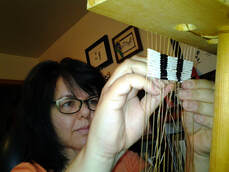

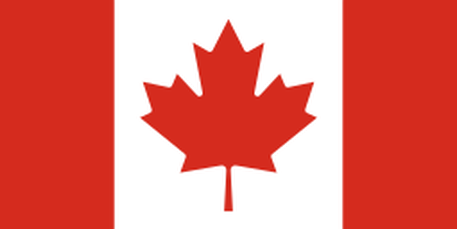

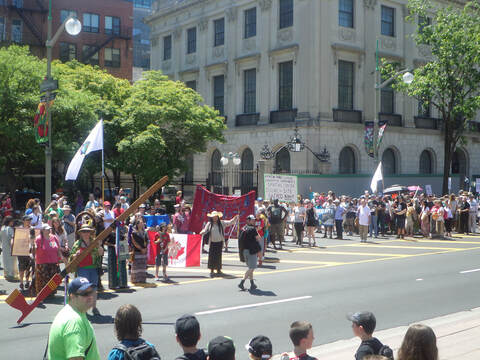
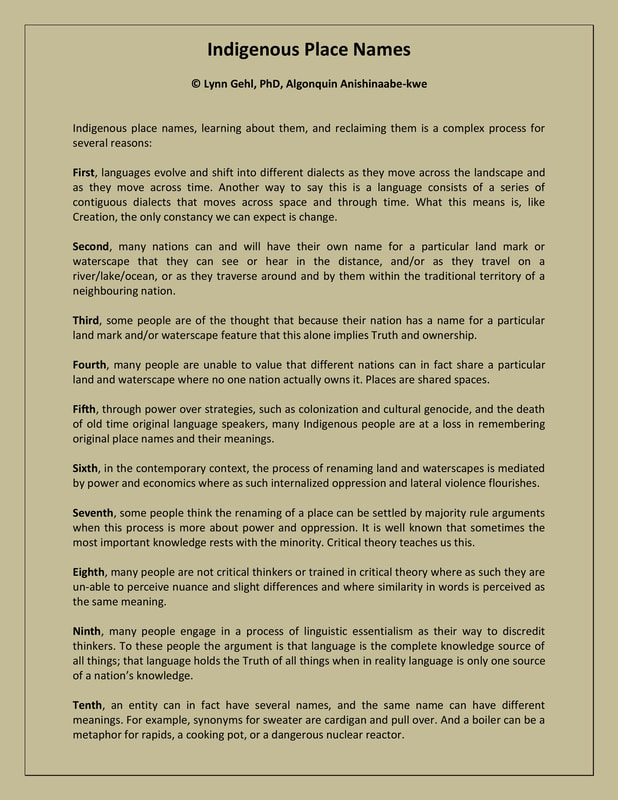


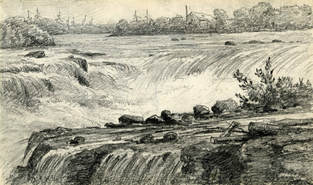
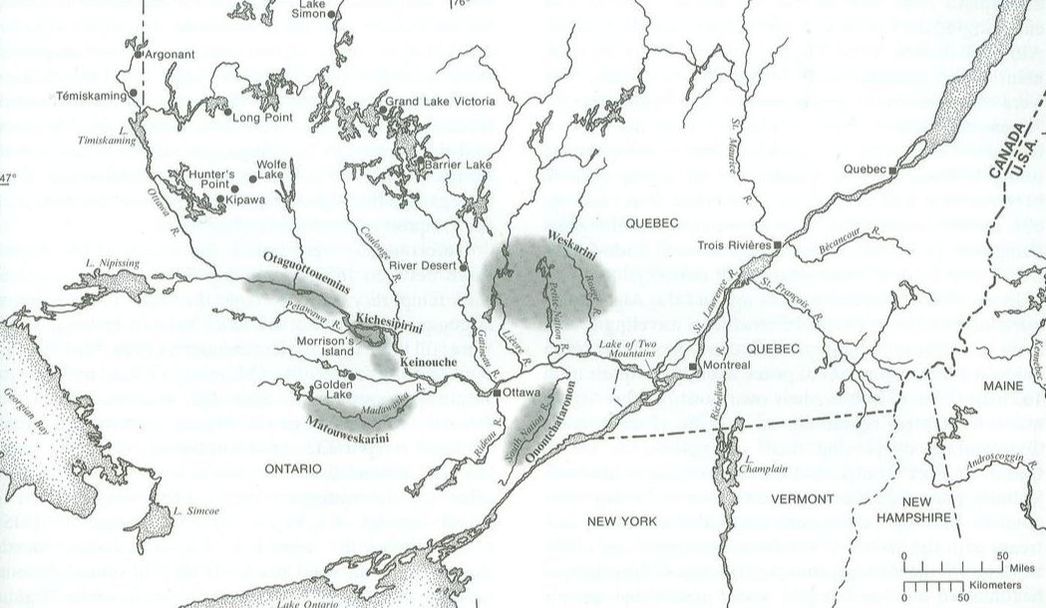
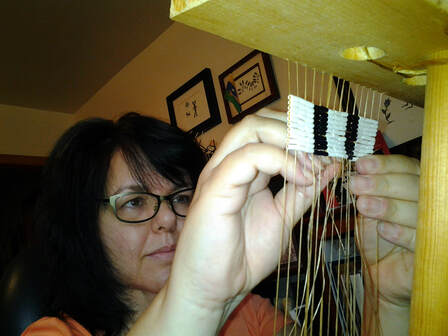
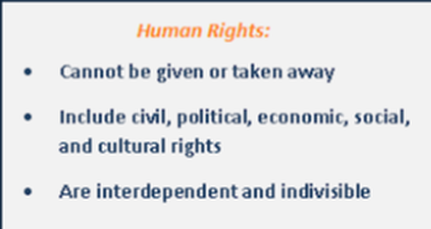
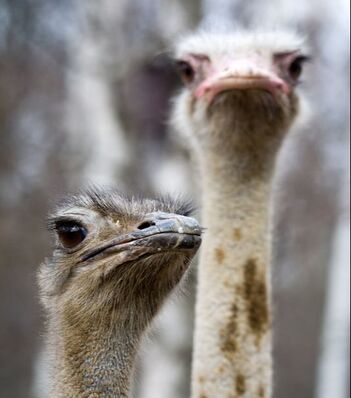
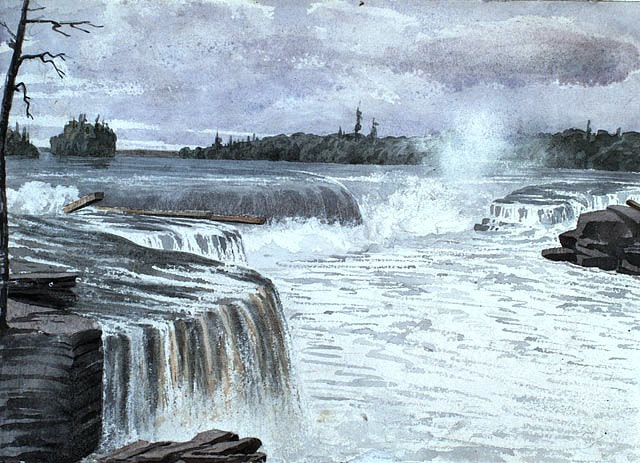
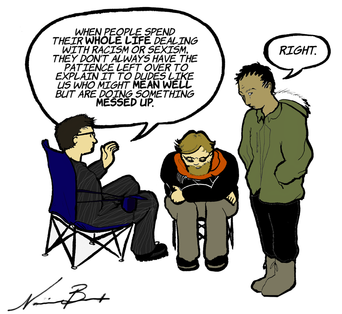
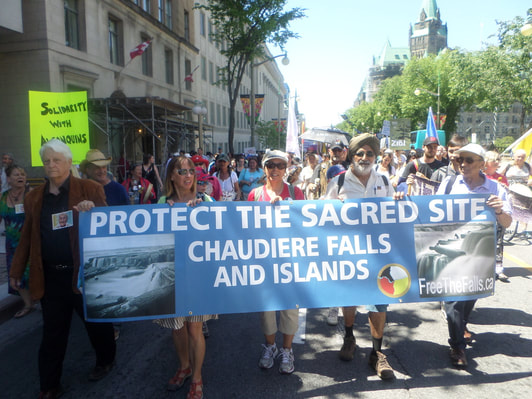
 RSS Feed
RSS Feed
